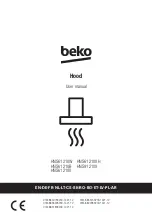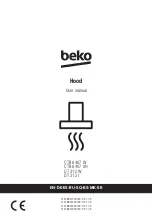
Page 2
L114A 0808A
Ducting Do’s and Don’ts
NEVER
restrict the duct size. The K250 blower unit requires 7” round duct or equivalent (32.5
square inches). Using Vent-A-Hood transitions (back page) will ensure proper efficiency.
Do not use flexible or corrugated duct. This type of duct will restrict airflow and reduce
performance. Only use smooth, galvanized, metal duct. Observe local codes regarding special
duct requirements and placement of duct against combustibles. Make the duct run as short
and as straight as possible with as few turns as possible. Avoid sharp-angled turns. Instead,
use smooth, gradual turns such as adjustable elbows or 45 degree angled turns. For duct runs
over 20 feet, increase the duct diameter by one inch for every ten feet of duct. A 90 degree
elbow is equal to 5 feet of duct. Using Vent-A-Hood roof jacks or wall louvers (back page) will
ensure proper efficiency. Airflow must not be restricted at the end of the duct run. Do not use
screen wire or spring-loaded doors on wall louvers or roof jacks. Do not terminate venting into
an attic or chimney. Where possible, seal joints with duct tape. The hood must be ducted to the
outdoors without restrictions.
Blower
Duct Size
Sq. Inch Area
K250
3 1/4” x 10” rectangular or equivalent
32.5”
YES
NO
Smooth Duct
Smooth Gradual Turn
Flexible Duct
Sharp Angled Turns























